GT-VX1 Component Details
Airframe: The airframe of the aircraft is machined from 6061-T6 extruded aluminum tubing, plate and solid stock. 303 stainless and 4130 Chromoly are used for many shaft components, as well as various plastics for bushings. There is no welding on any structural components.
Rotor Head: The rotor head on the VX1 has been updated to our most recent version. The The X1B. Upgrades on this model include bolts-in-shear design, retained hat bushings for teeter bolt, and cushioned teeter stops.

We use the highest quality, full-complement, dual-row, angular contact sealed bearing available. A ¾” gimbal offset and accompanying trim spring add dynamic stability to the aircraft.
A hydraulic rotor brake system is integrated directly into the torque tube. The brake pad assembly is pushed outward to the ID of the PR ring gear much like a drum brake. When disengaged, the brake pad retracts slightly away from the ring gear, and is completely clear of the rotating components with no chance of interference during flight.
The outward force of this system is much more effective than traditional gyro rotor brakes that push upward on the bottom of the ring gear and do little more than causing excessive flexing of the disk assembly.

Cushioned teeter-stops utilizing polyurethane springs provide a soft contact point between the hub bar and rotor head.
Pre-Rotator: The PR drive system mounts to the engine gearbox. We offer adapter plates for Rotax B, C, and E gearboxes as well as some Hirth models.
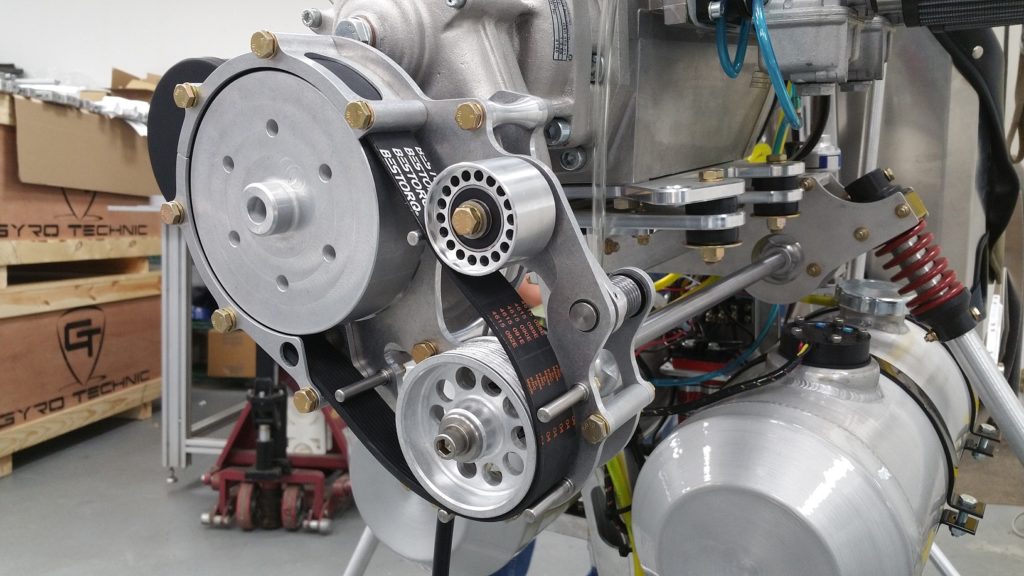
A Poly-Vee drive belt is tensioned against the drum pulley, sending the power through the drive shaft system.
Our proprietary drive engagement system pulls the drive belt outward to the containment guards when dis-engaged. This assures that the belt is completely out of contact, and not dragging on the drum pulley during flight. The power is then transmitted through our own custom 90° gearbox where the rotation direction is reversed. Power is then delivered up through our telescoping coupling to the Bendix unit on the rotor head.
A very quick spin-up of 200+ RRPM is easily achieved.
Pre-Rotator Engagement Lever: The PR system is engaged by lifting a lever that resembles a “collective” on a helicopter.
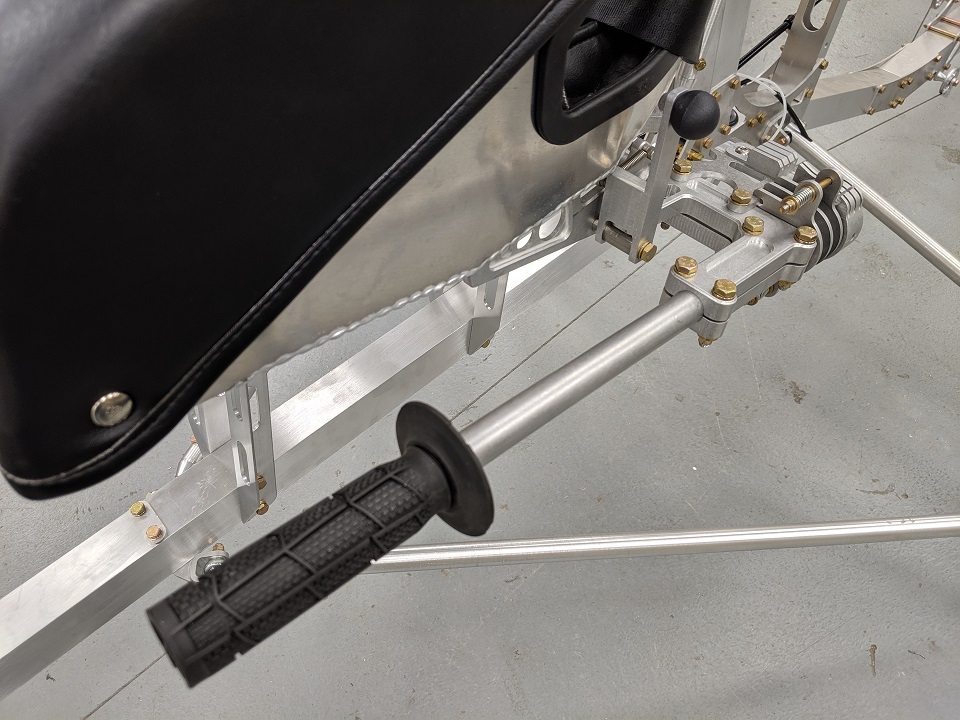
A safety catch must be released prior to engaging the pre-rotator (PR) drive.
Once the blades are up to the desired speed, the lever is lowered, and the safety catch snaps shut. This prevents the drive system from being unintentionally engaged during flight.
Throttle Quadrant:
Our precision machined throttle quadrants will give smooth control over power settings.
The model provided will depend on engine selected. This will determine the proper length of throw, how many cables are required, and if a choke (fuel enrichment) circuit is needed.
**Note** We use multiple cables instead of splitters. Splitters and can fail and can not be inspected.
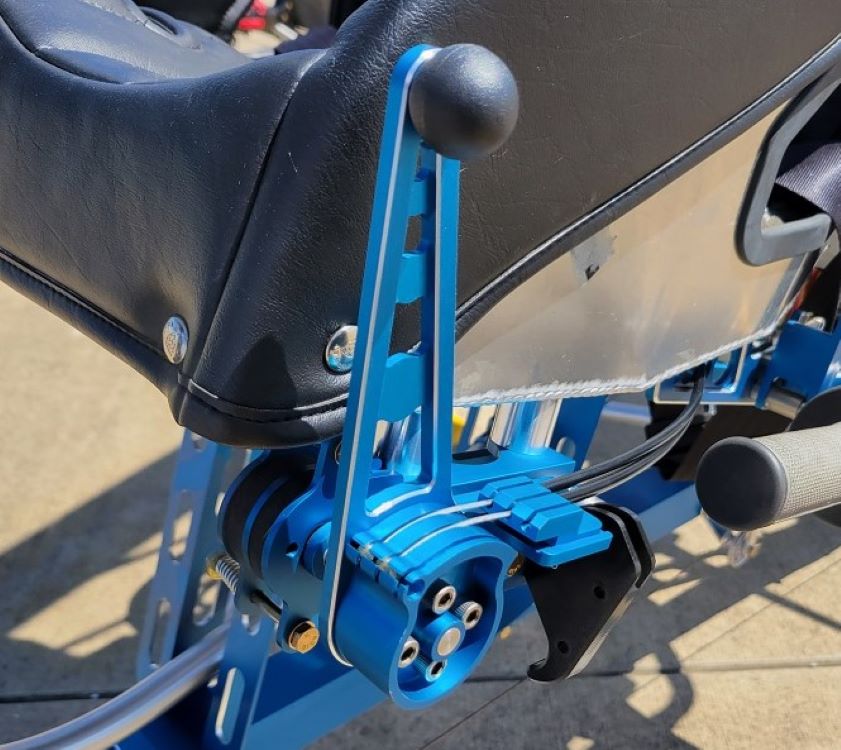
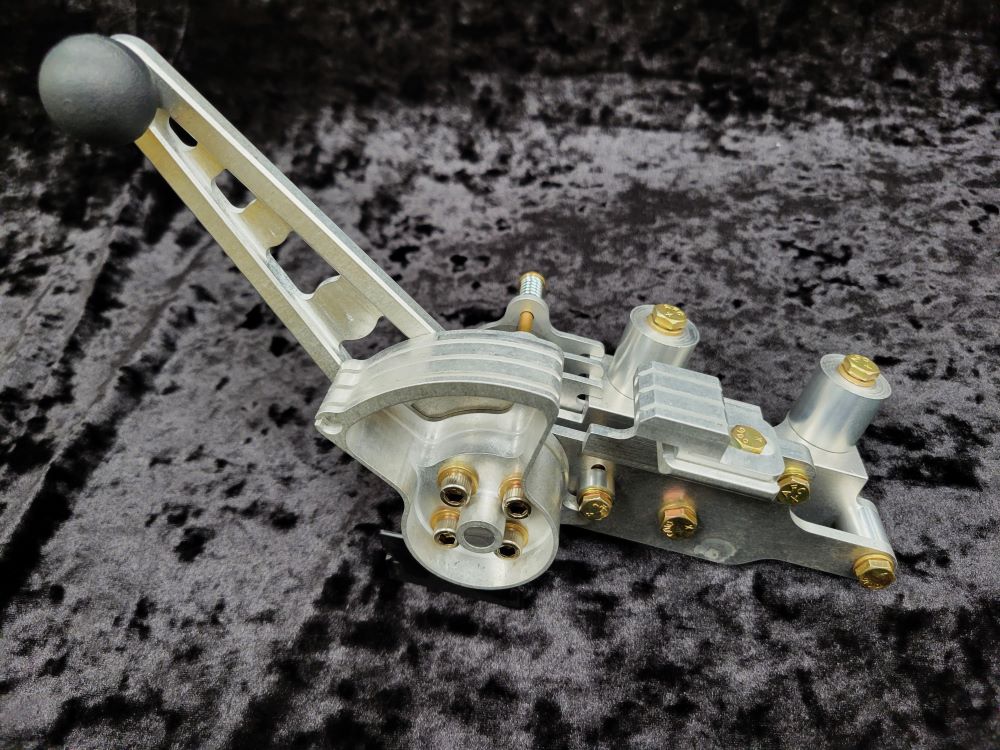
Dual, stacked friction disks make for reliable, maintained throttle positions and silky-smooth, effortless adjustments.
Empannage:
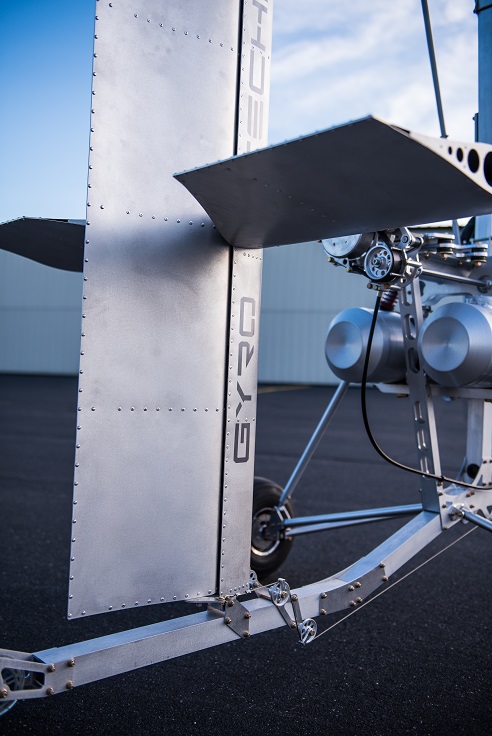
The 56.5″ tall x 48″ wide tail section includes a stationary leading edge with an independent rudder section. The horizontal stabilizer is (ground) pitch adjustable.
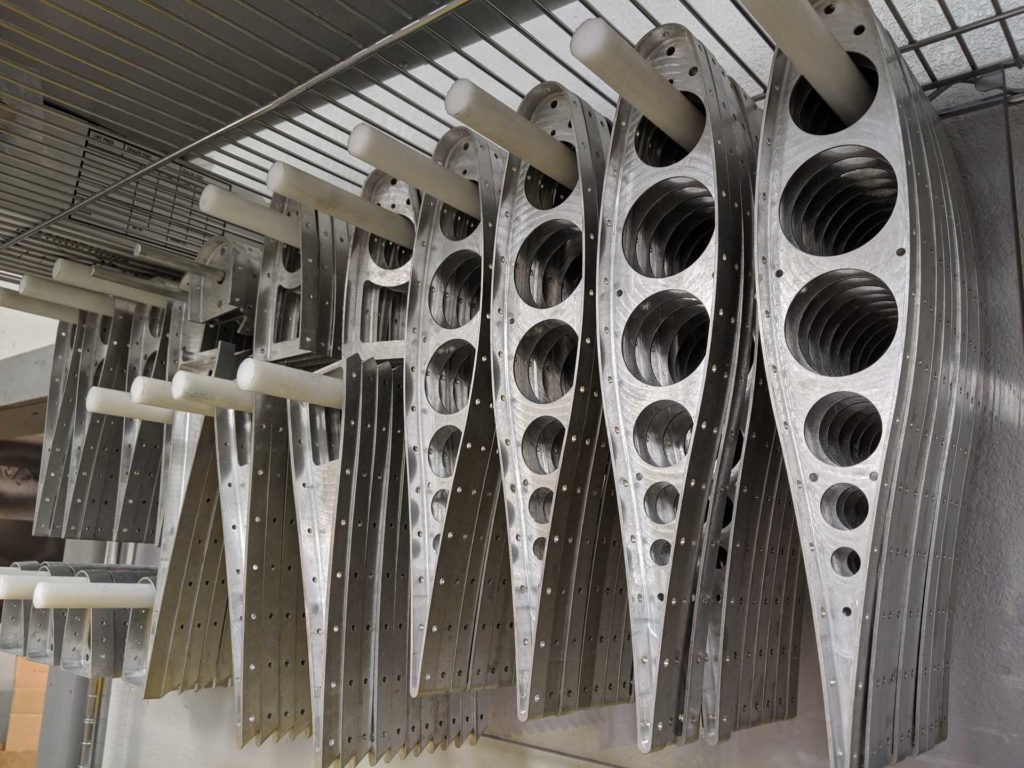
All the internal ribs are machined from ½’ inch solid 6061-T6 aluminum plate. 22 Ga 5052 aluminum skin is laser-cut including all rivet holes. Perfect alignment! We can deliver fully assembled, or you can come to our shop to assemble and rivet yourself.
Instrument Pod:
The high-tech machined theme of the entire aircraft carries through to the instrument pod as well.
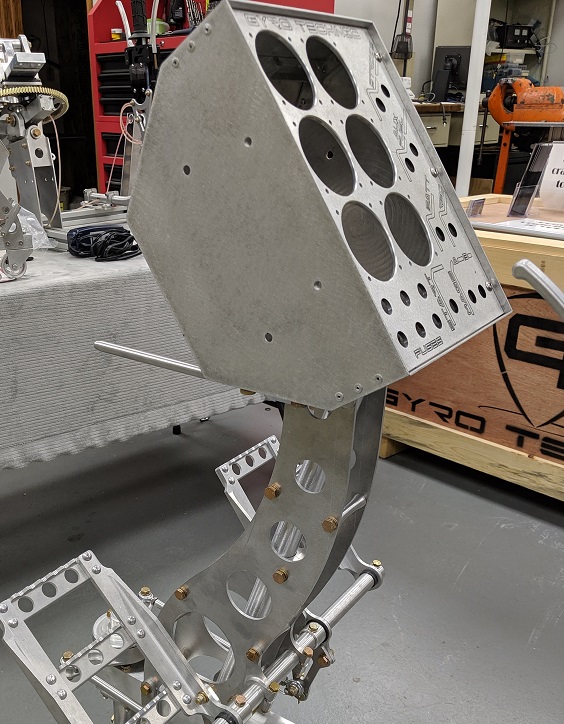
The side plates are machined from solid ½” thick aluminum. The machining process remove all but the rivet and bolt mounting points, and .050” thick side walls.
We offer several choices for instrument panel layout, or, send us a sketch of your desired layout and your instrument sizes. We will design and machine a custom panel face for you! (Included with each kit)
The standard pod face is 8” wide x 10” tall. We also offer a 11” wide x 11” tall and 13″ wide x 11″ tall versions for those who really like a lot of gadgets.
Each instrument pod includes a removable back plane for terminal strips and electrical system connections.
A Pitot tube and hose fitting is included.
Cyclic:
All of our cyclic linkages are now of a robust walking-beam linkage, with a push rod-through-tube design.
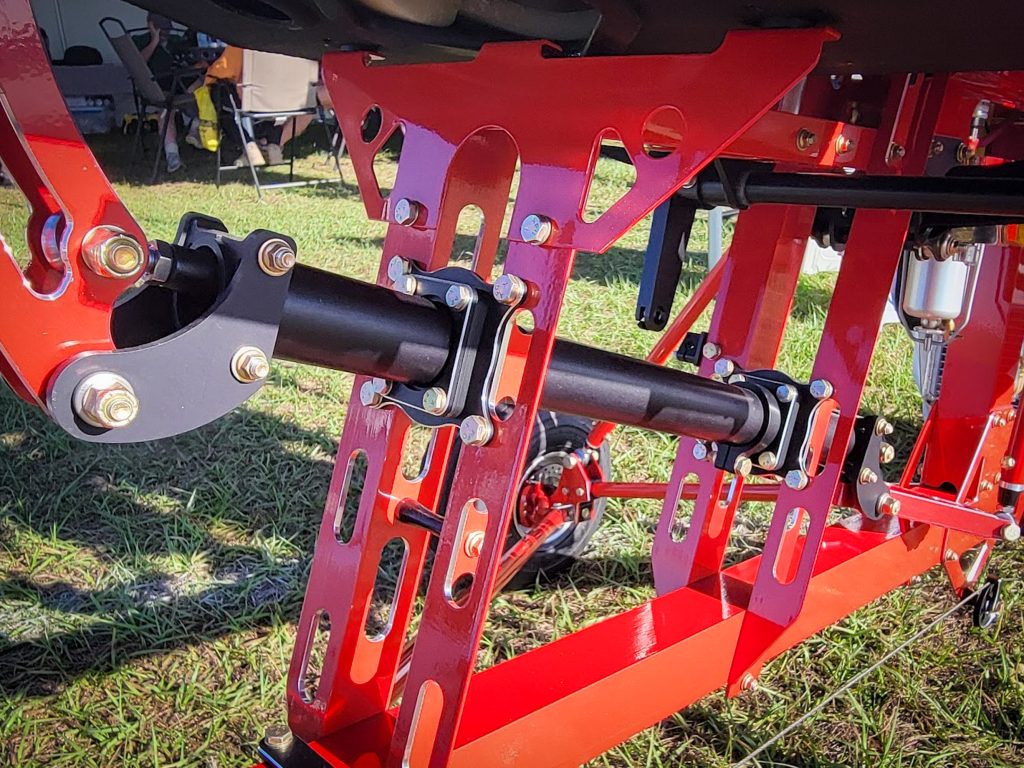
A cyclic lock is included on every model. This removes pressure during taxi runs, and hold the blades in a safer position when the aircraft is parked. No chance of unintentional engagement during flight!
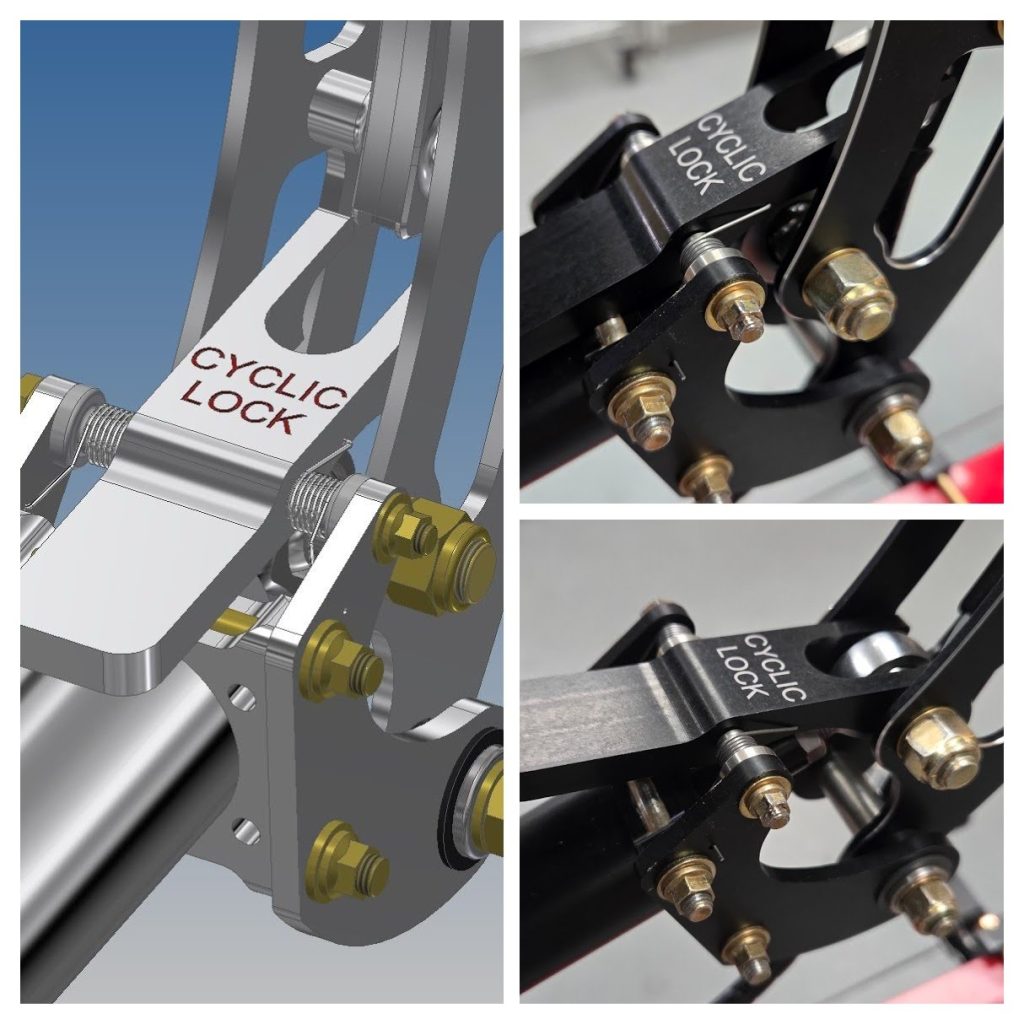
The position of the cyclic grip is positioned so that the pilot’s wrist is resting across their thigh, for a casual, comfortable position.
Choose from a simple PTT switch on the top of the cyclic grip, or if including one of our Kanardia instrumentation packages, include a wonderfully functional “Joyu” cyclic grip to control virtually every instrumentation input with the touch of your thumb!
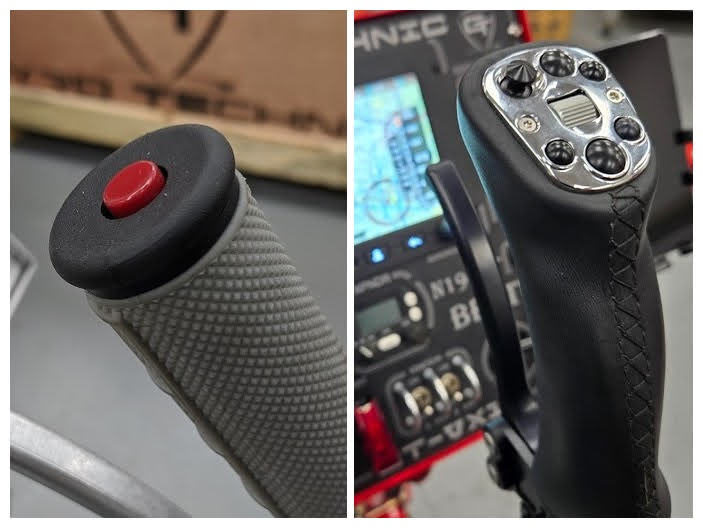
Nose Wheel:
We machine our own front wheels from solid 6061-T6 Aluminum. Strong, lightweight, and beautiful!
The nose wheel linkage design provides the best of both worlds: The safety and forgiveness of a full-caster system, while providing the smooth, precise ground control of a hard-linked system.
The nose wheel assembly is linked to the rudder pedals with push rods through a spring compliance device. This device allows the nose wheel to free caster +- 7° before hitting the hard stops. If you happen to touch the nose wheel down with it slightly askew from the direction of travel, It will straighten itself out and prevent you from darting off to the side of the runway.
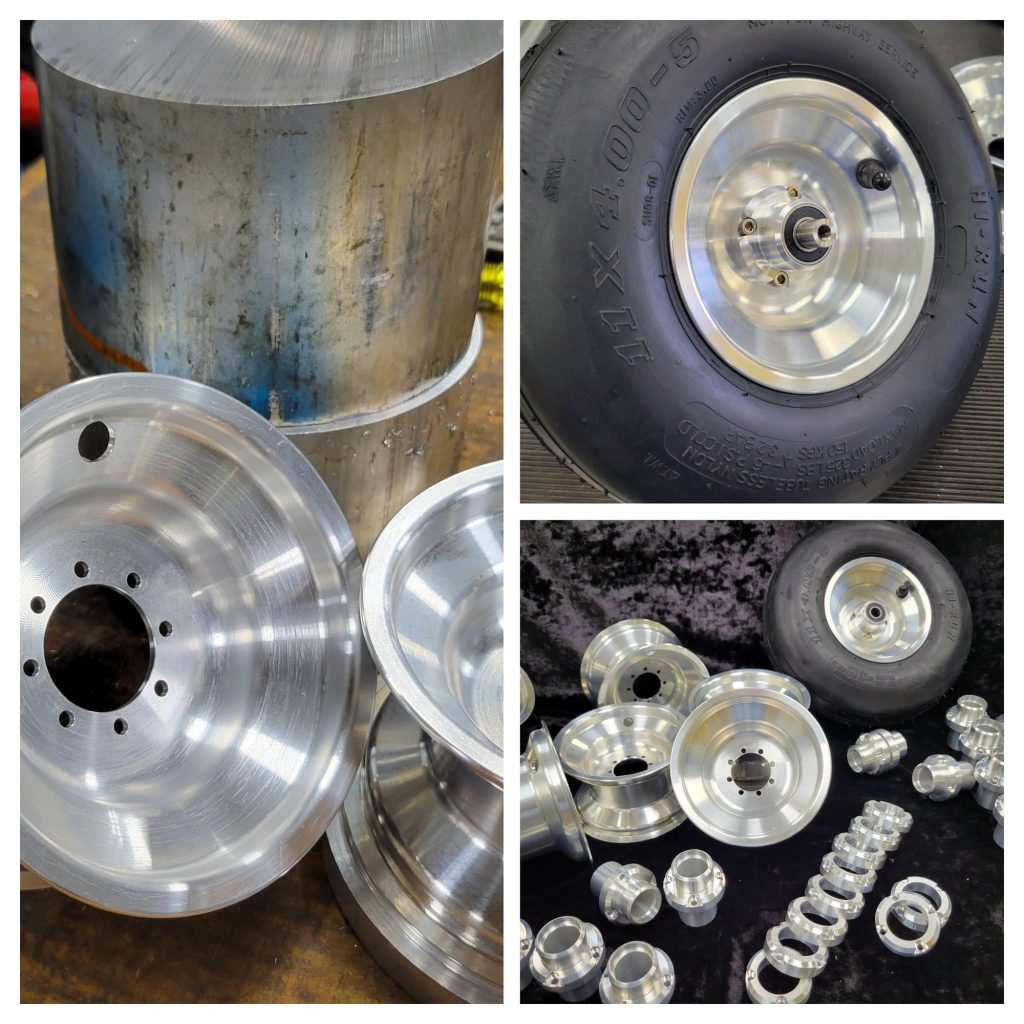
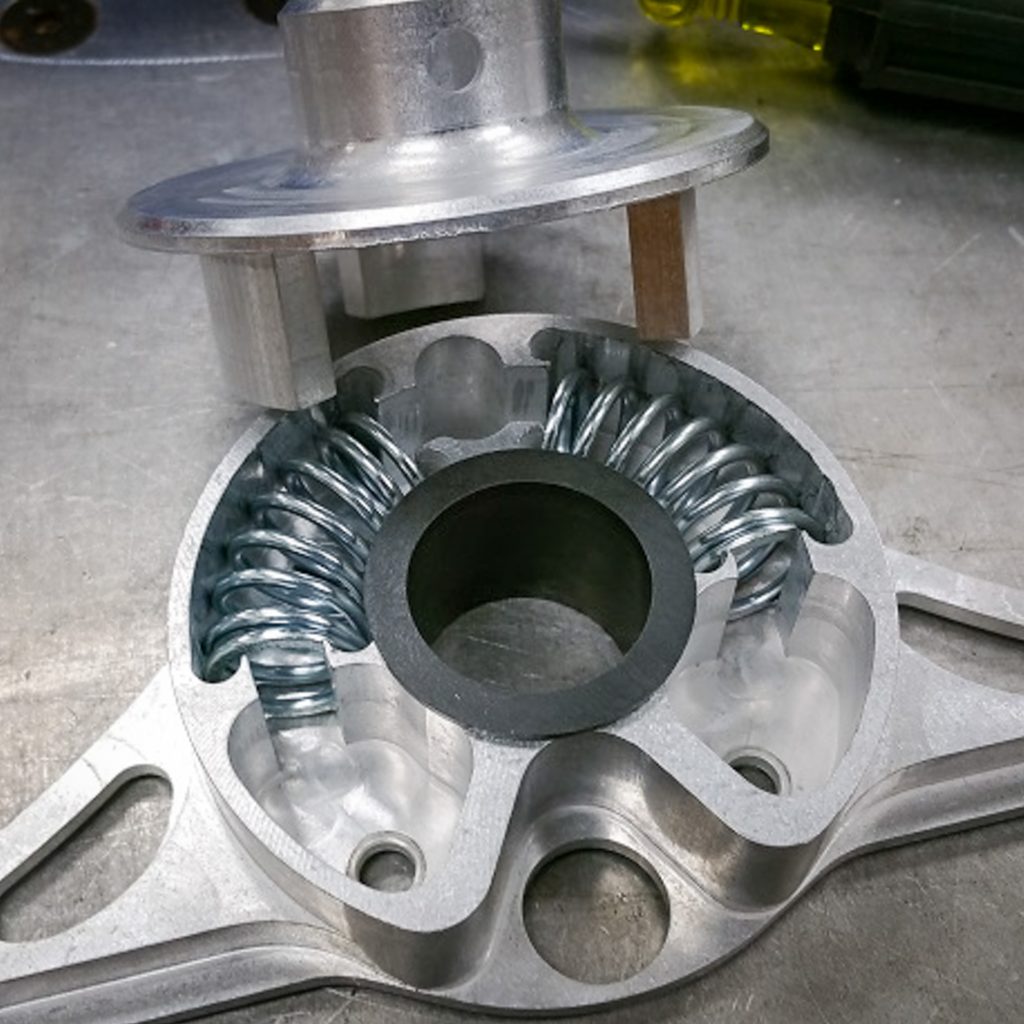
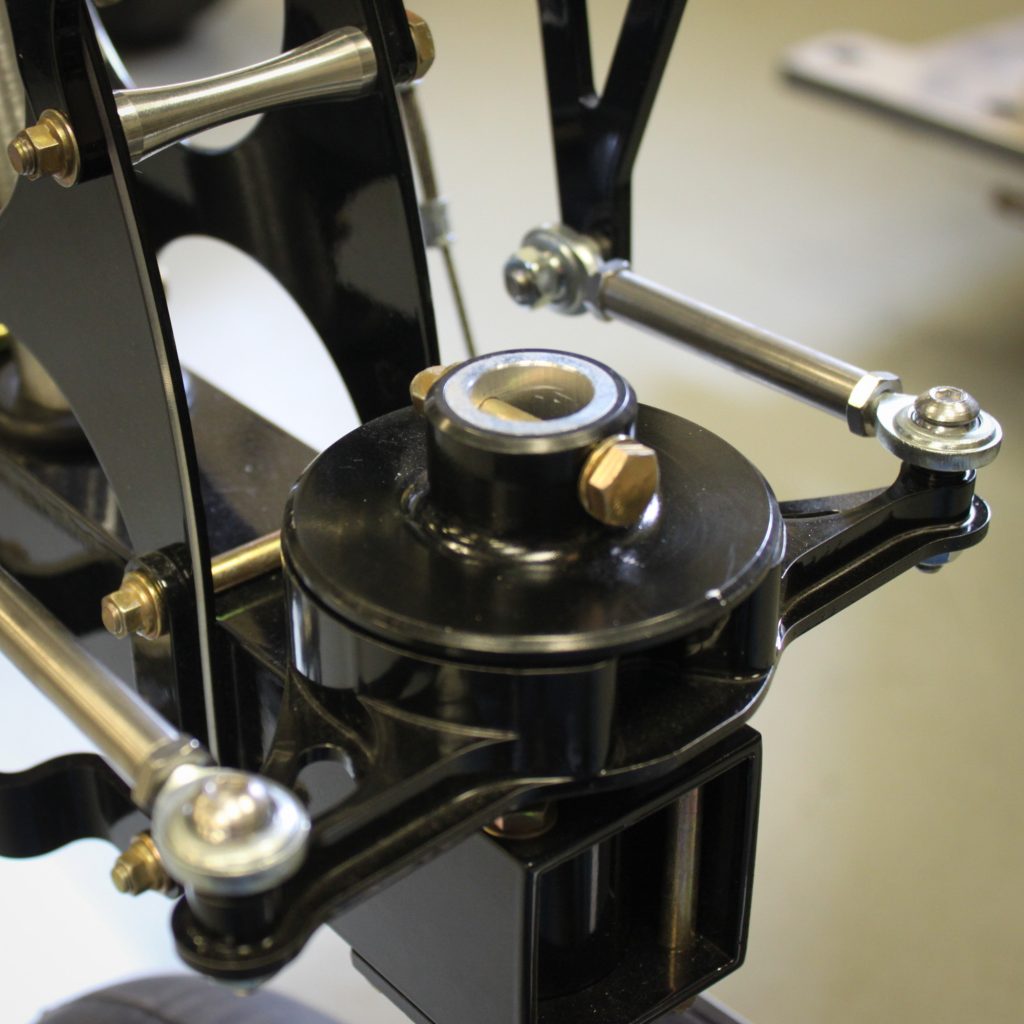
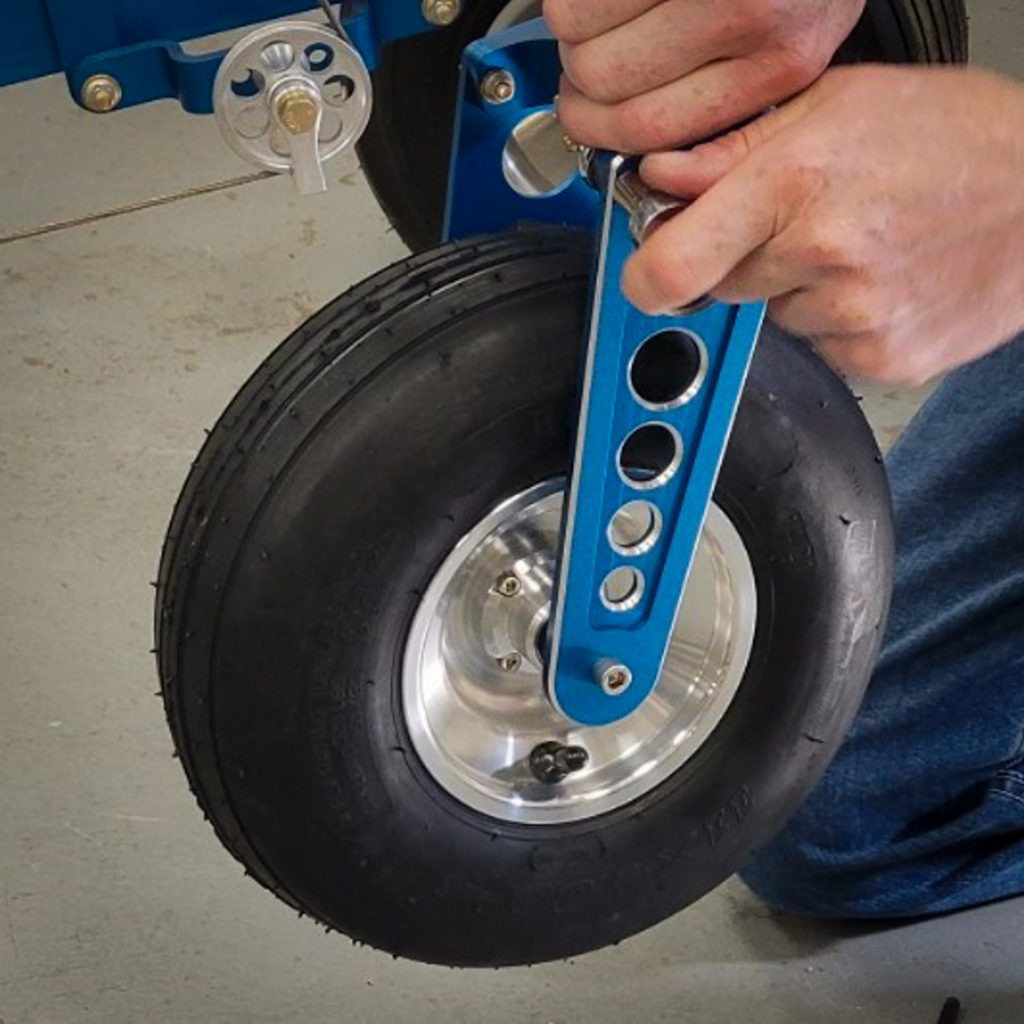
Brake Calipers:
Our hydraulic brake calipers and floating disk system offer dependable stopping power with minimal weight. Calipers feature dual ¾” hydraulic pistons, quad ring profile seals, metal backed brake pads and standard automotive style bleeders.
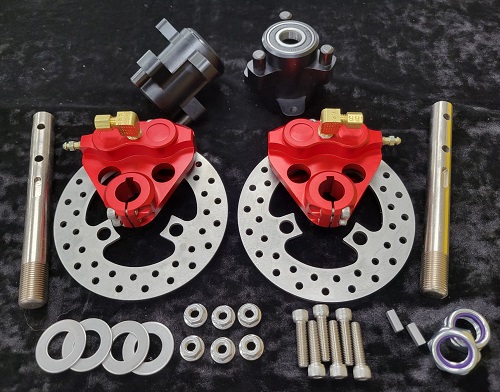
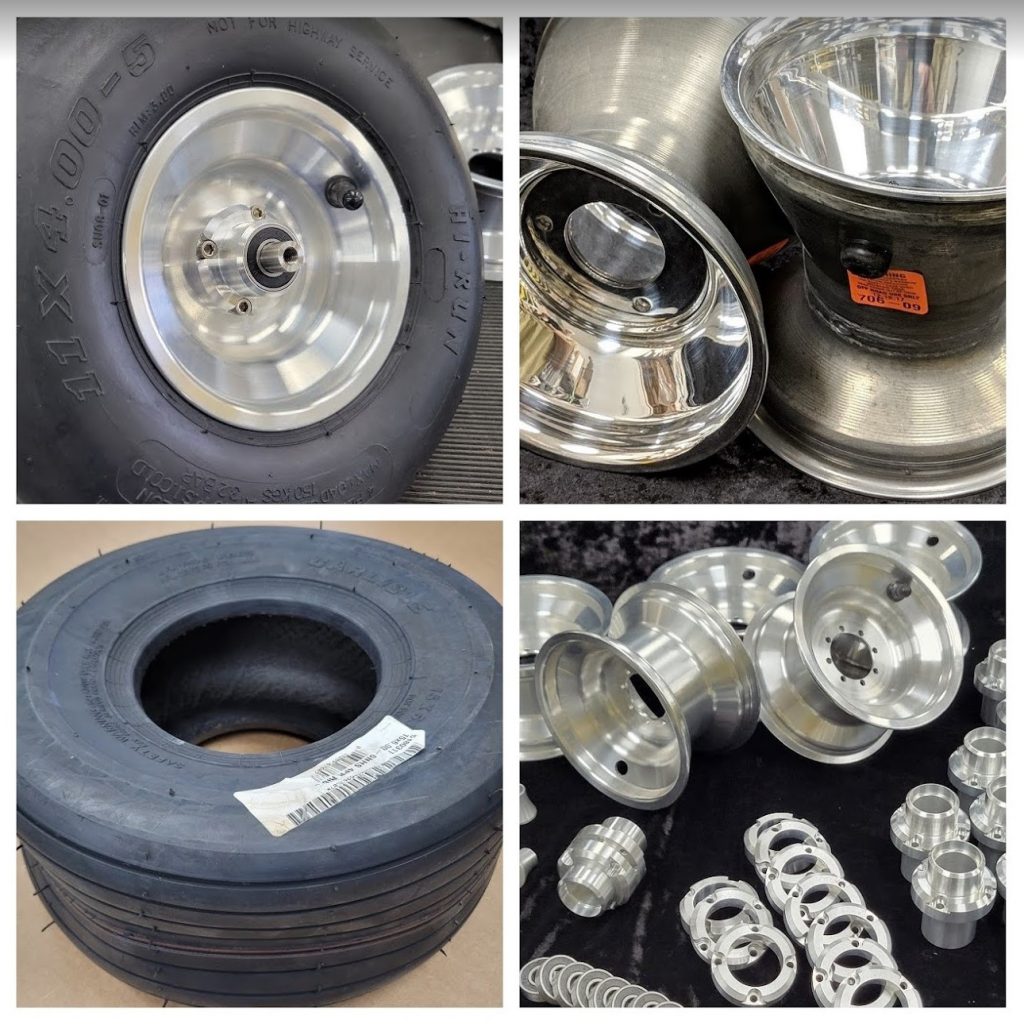
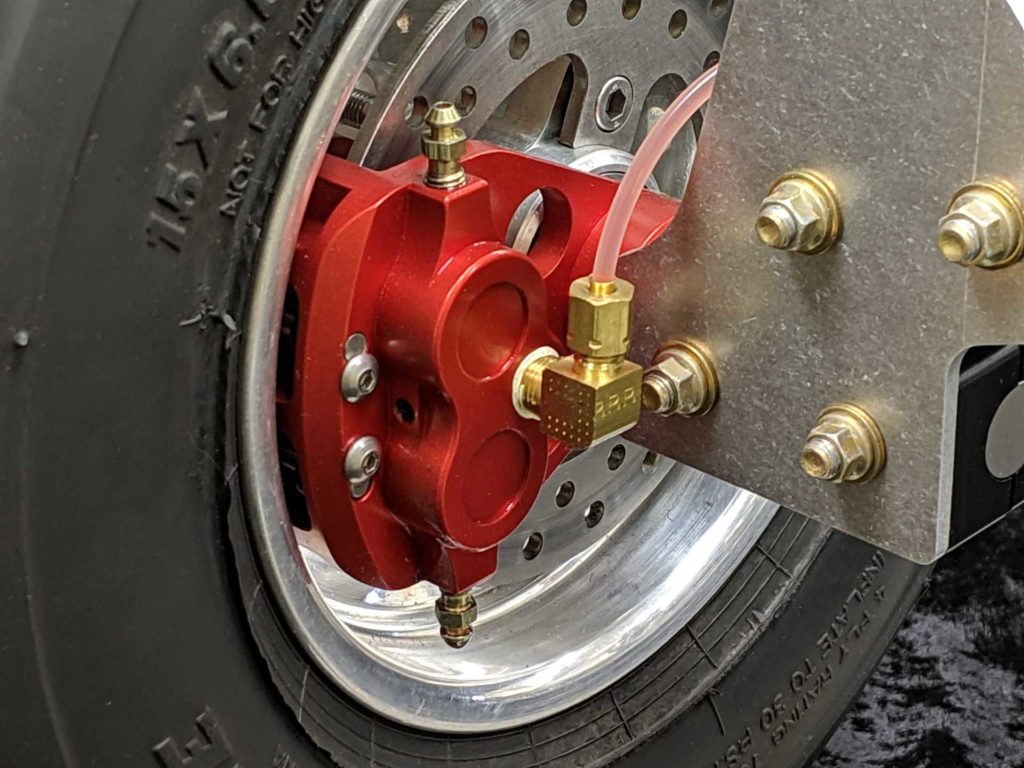
Master Cylinder:
Our dual master cylinder is as attractive as it is functional. The front piston controls the wheel brakes, and the rear piston is for the rotor brake.
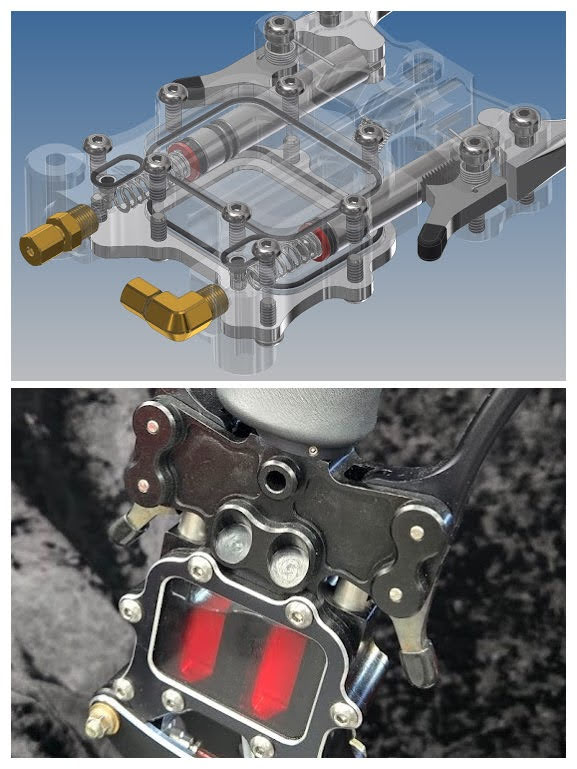
A common, easy to view reservoir feeds both systems.
Both are fitted with a latching mechanism to keep the wheels / rotor secured. A simple touch of the lever to activate, and squeeze to release. An enhanced fluid recovery circuit provides awesome stopping power!
Rear Wheels:
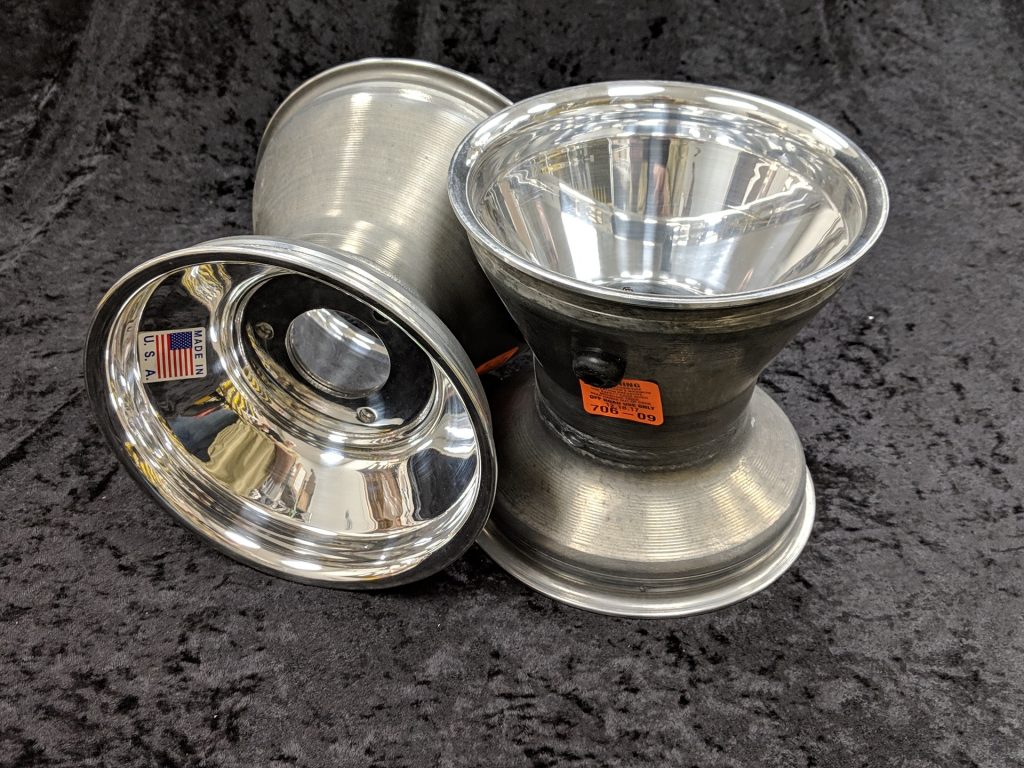
Machined aluminum hubs, spun aluminum wheels, and triple ply tires complete the main wheel assembly.
Seat and Harness:
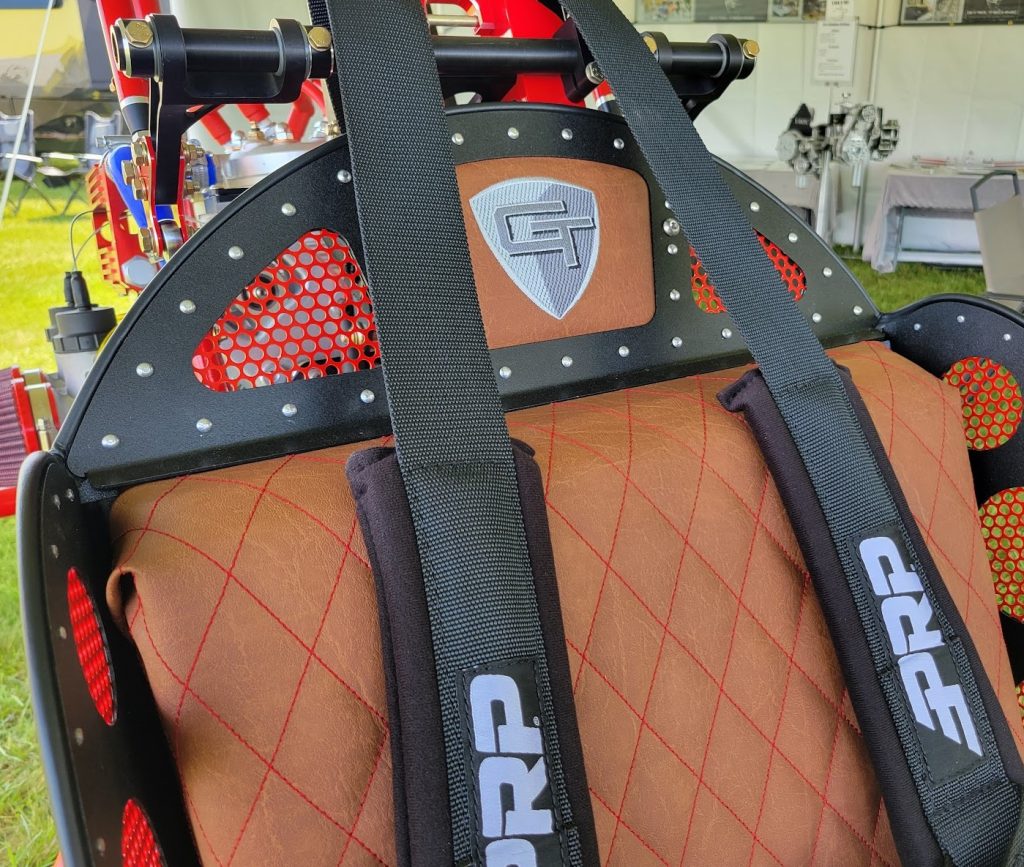
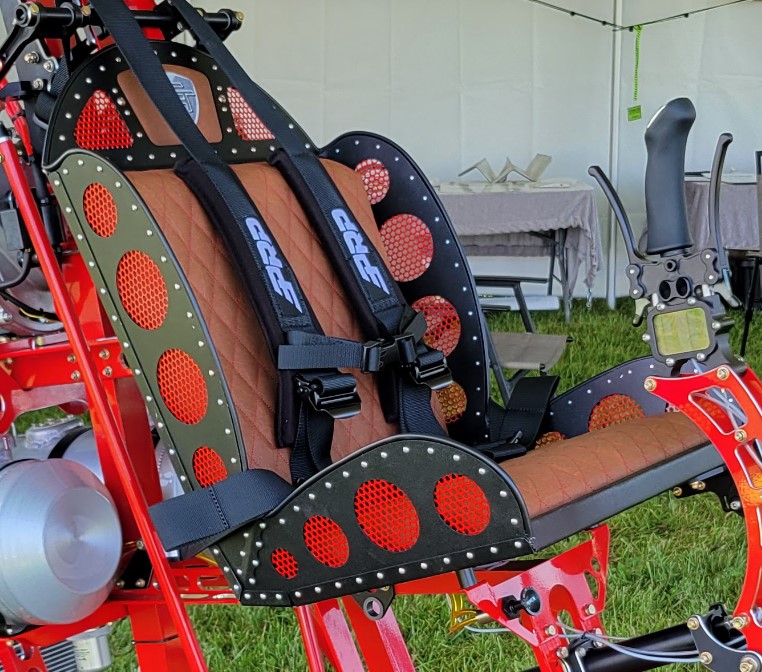
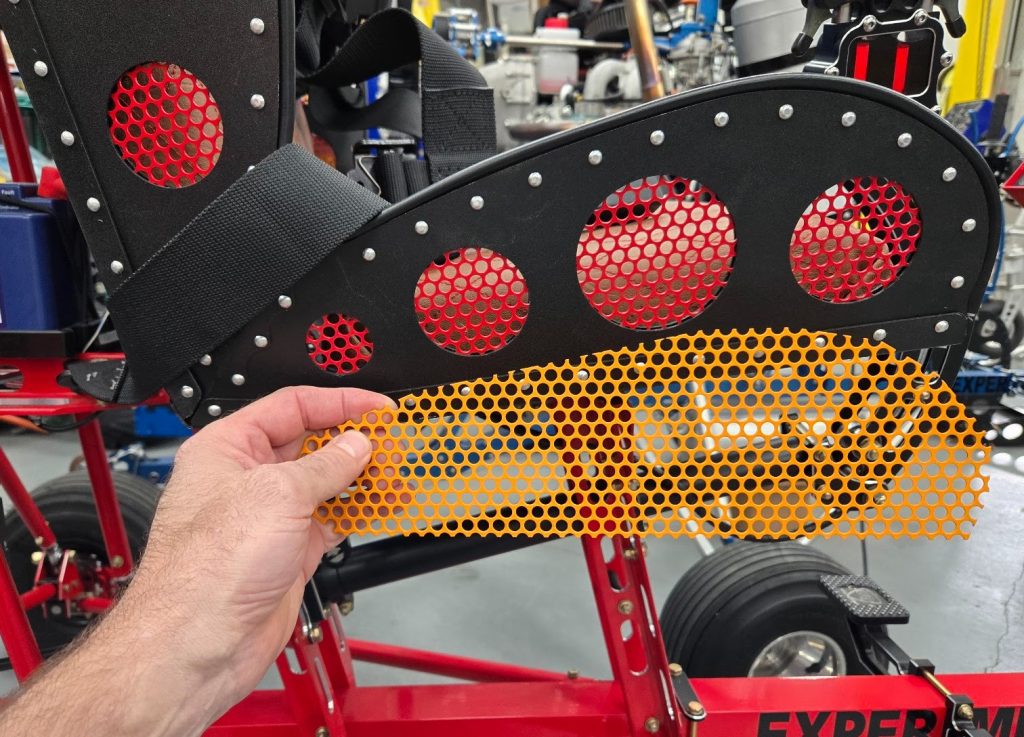
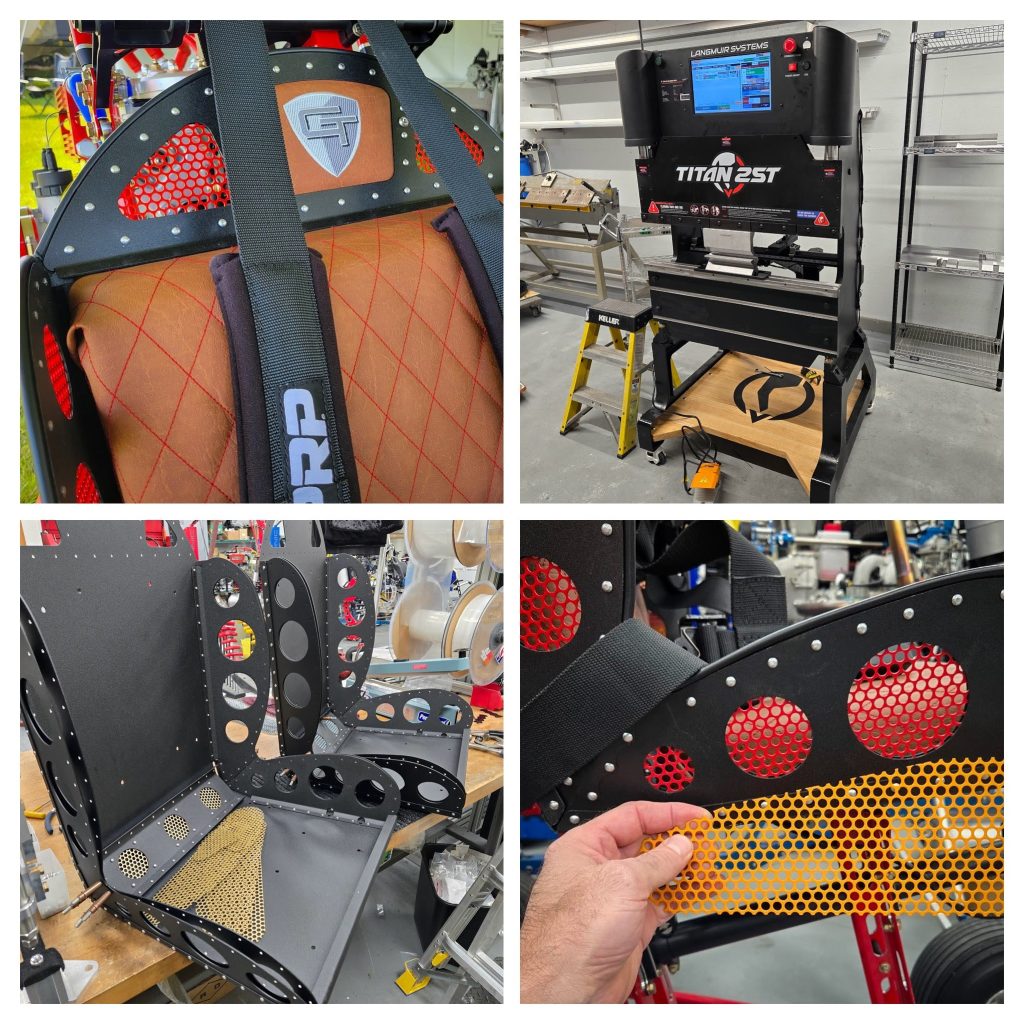
Our seats have recently been upgraded to our own, “steam punk” versions made in-house! Memory foam cushions offer great comfort on longer flights. Customize the color of the perforated metal inserts to match or enhance the rest of your gyro finish! 4-point harness for safety and security.
Rudder Pedals:
The foot pedals can be mounted either ahead of, or behind the instrument pod risers to suit pilots of different heights.
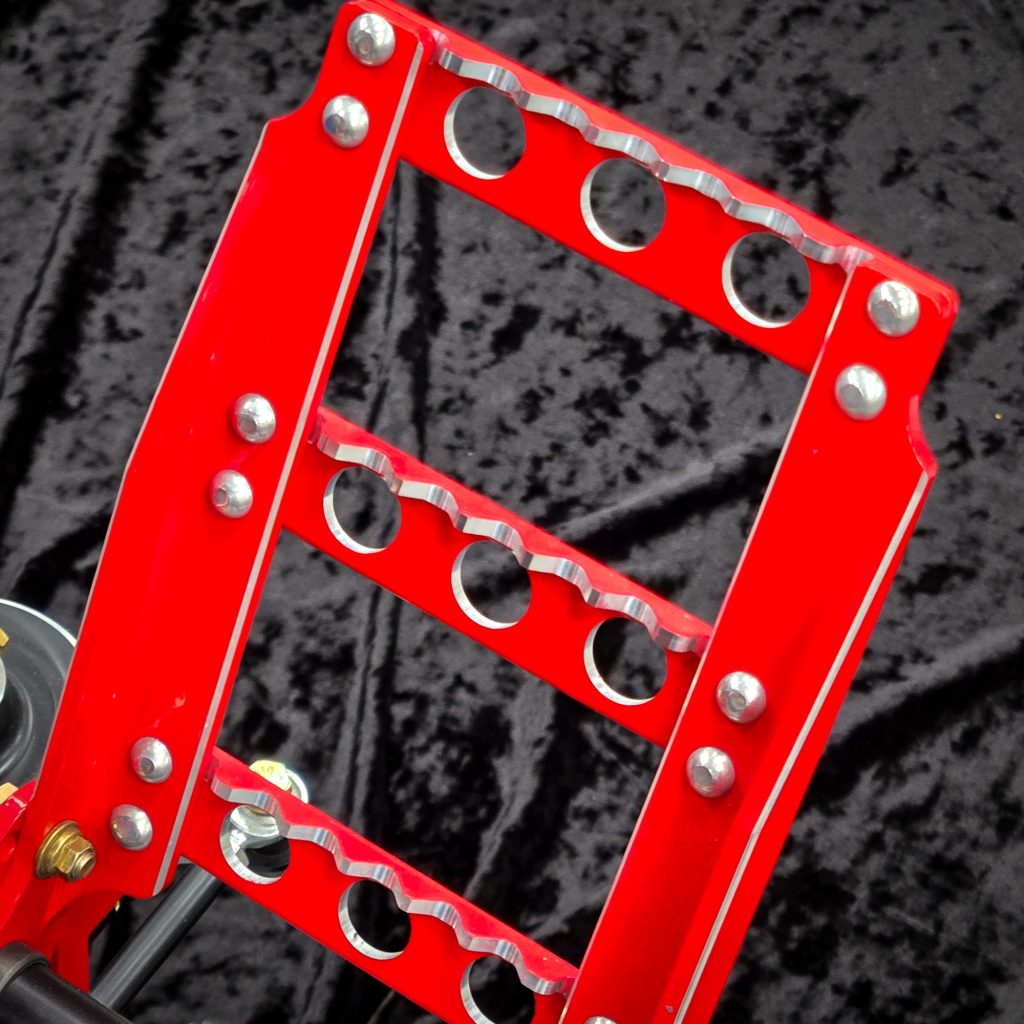
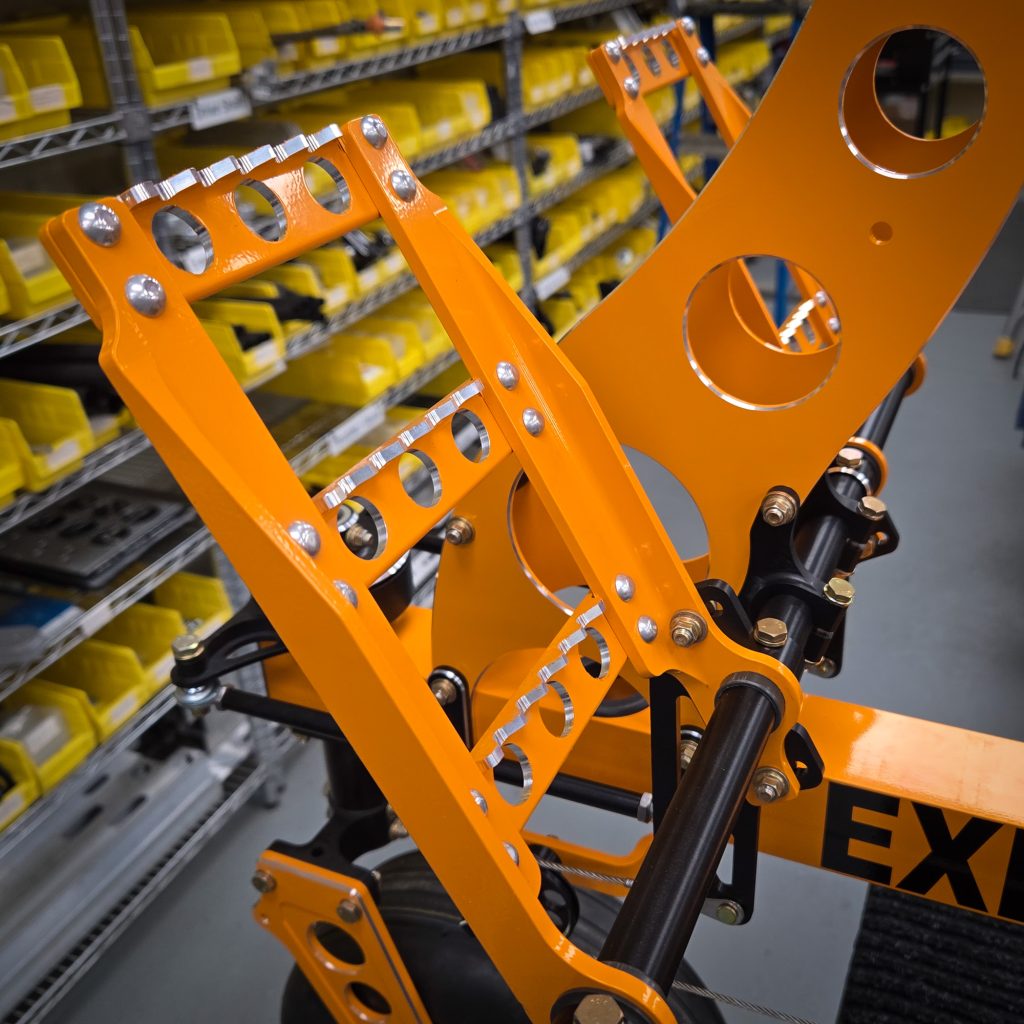
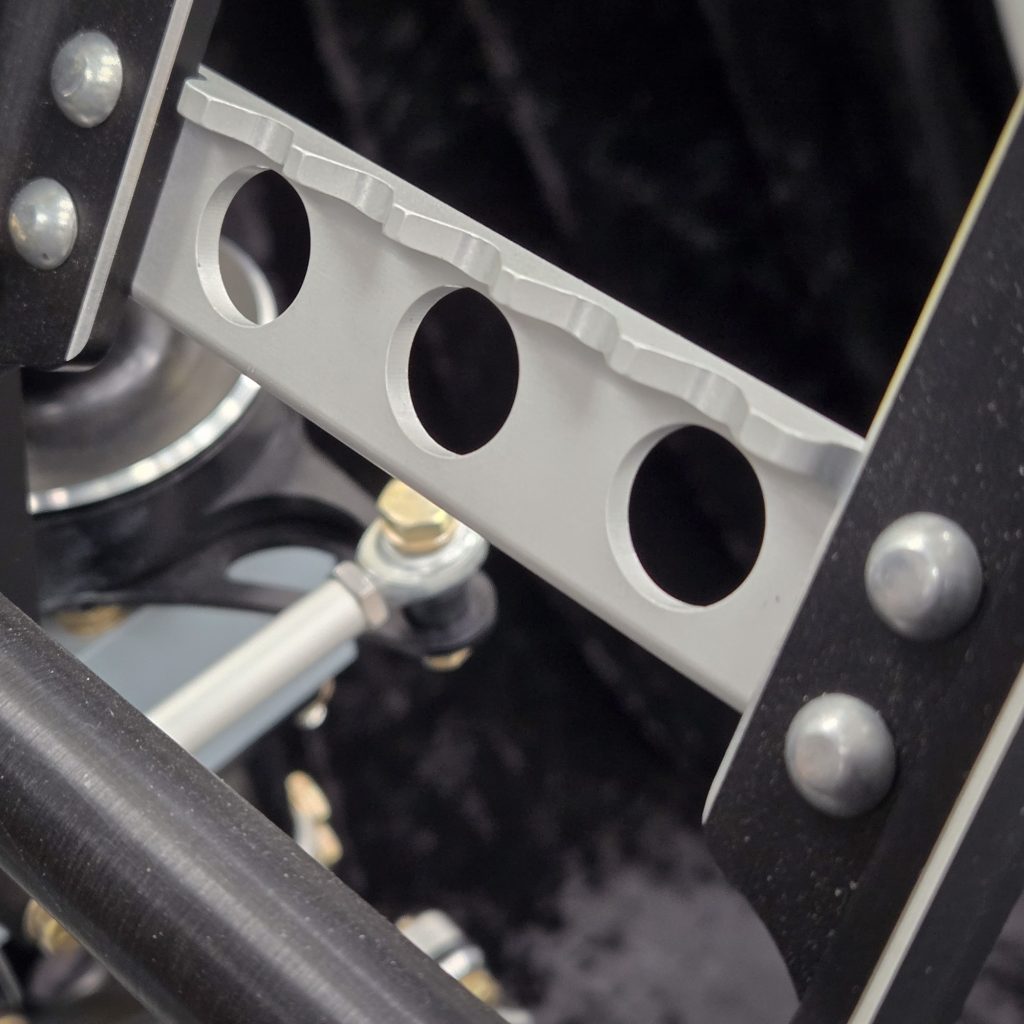
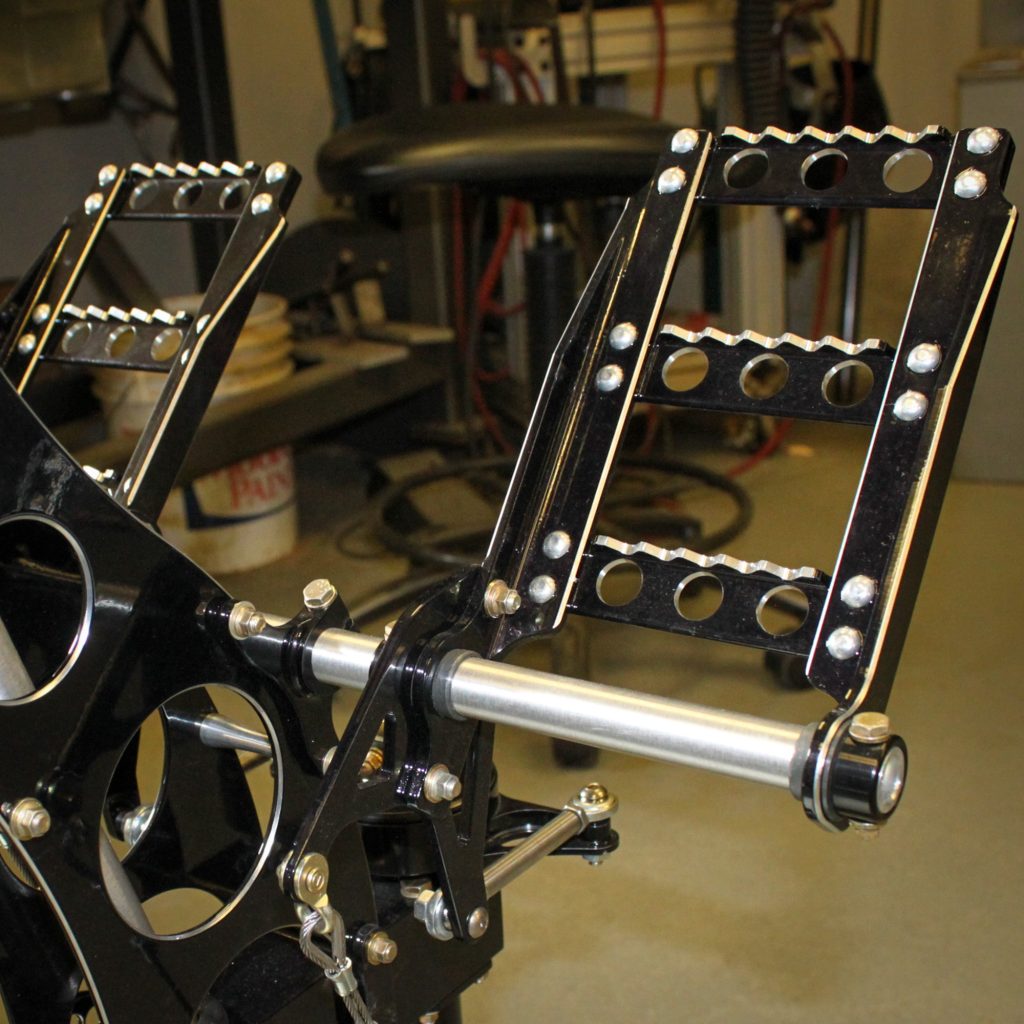
Suspension:
A pair of 960# /in coil springs provide plenty of forgiveness for those “non-greaser” landings!
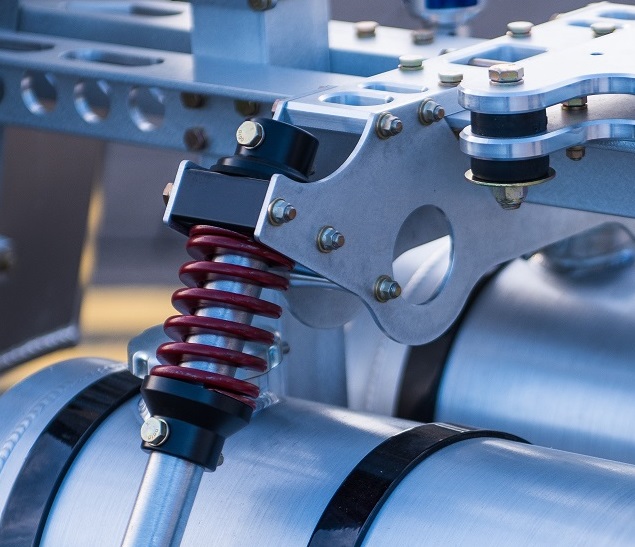
Cable Control:
The foot pedals are linked to the rudder via 5/32” stainless cable routed through precision machined cable pulleys with ball bearings and cable retainers.
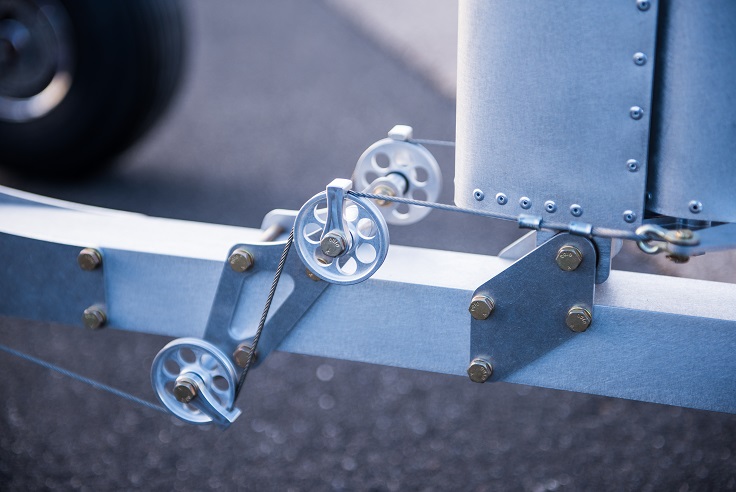
Fuel tanks:
Two spun aluminum fuel tanks offer a total of 7.5 Gallons capacity.
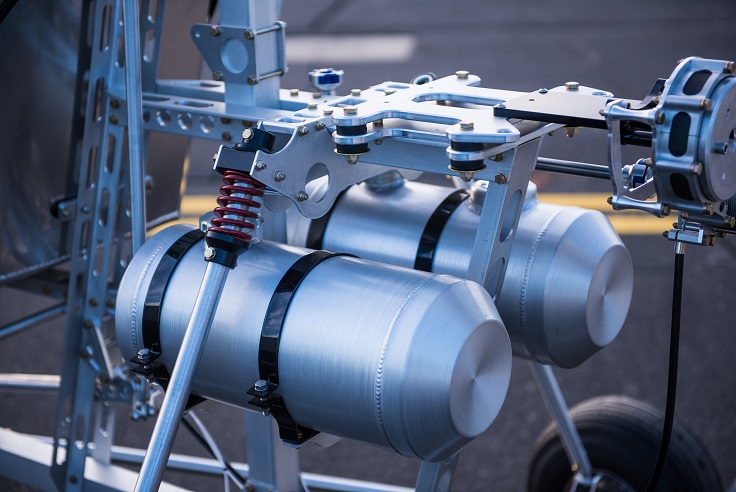
A central manifold provided connects the tanks together for a single fuel source. This manifold also allows for 2 separate outputs (Mechanical and electric fuel pumps), a 1/8” NPT output for primer pump circuit, and a spring-loaded fuel sampling valve is included. (Manifold is located at the lowest point in the fuel system for water separation.)
SAE 5-Hole Fuel level sender port included in one tank, as well as independent air vent fittings for each tank.
**The size and location of the fuel tanks has been carefully designed in order to position them to be very near the CG of the aircraft. A hang-angle change of only 1° is seen from full to empty tanks.
Engine Mounts:
There are a lot of GT-VX1 machines flying with the Rotax 582. With the discontinuation of that engine however, the Simonini Victor 2 Super is proving to be a great replacement (upgrade)! We have engine mounts for Rotax, Simonini, and Hirth.
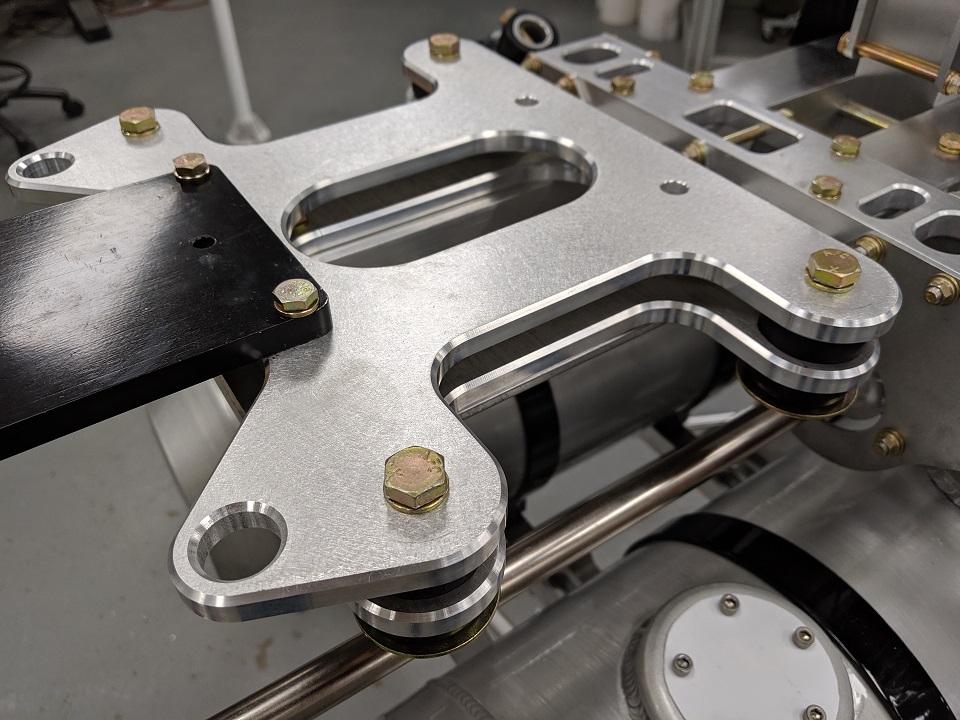
Folding Mast:
A key element in the GT-VX1 design is the folding mast system which provides convenient transport and compact storage.
Once the blades have been removed, the mast can be lowered in less than 5 minutes. Disconnect trim spring and telescoping PR drive shaft, loosen 1 bolt and remove 3. The upper mast easily folds forward, and control rods remain connected, and the tail remains supported.
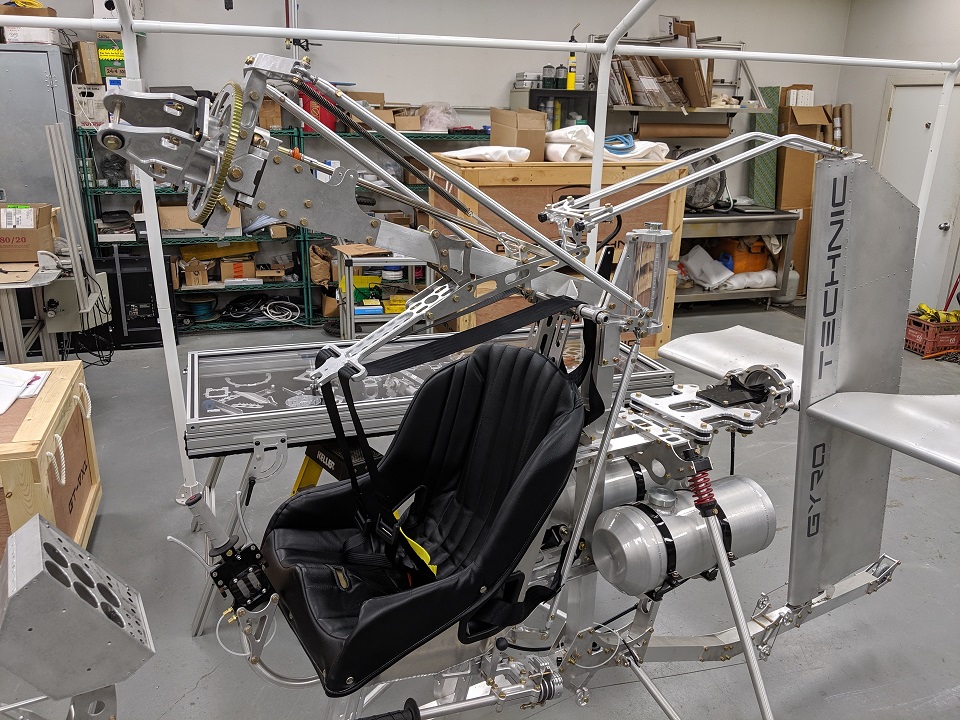
The machine measures Just over 6′ tall when in the folded position.

